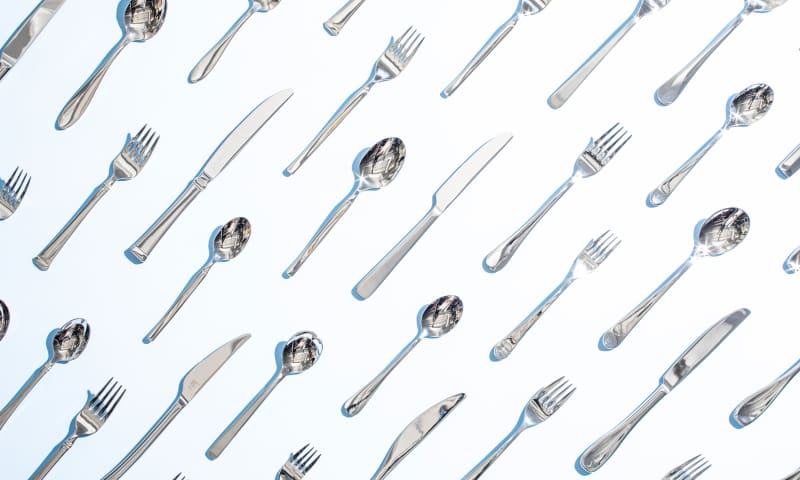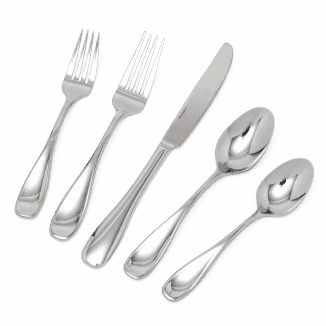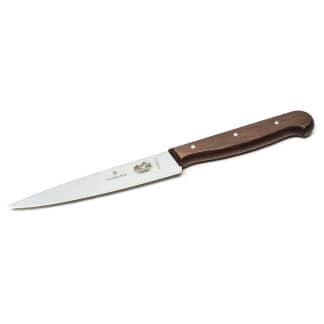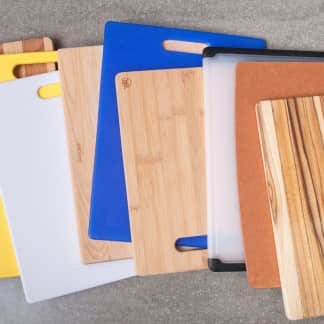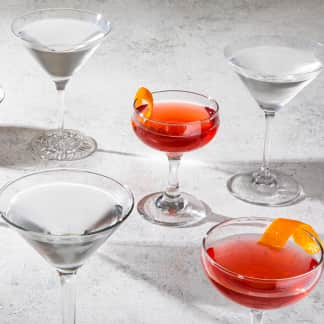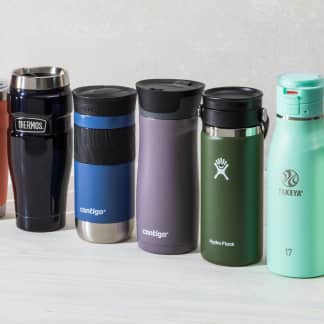Few kitchen tools get as much use as flatware, so we decided to test different sets of stainless-steel flatware. We found several great options. The sleek, sophisticated Crate and Barrel Caesna Mirror 20-Piece Flatware Place Setting includes four five-piece place settings. It’s our overall favorite. The Oneida Voss 45-Piece Flatware Set, a heavy but well-balanced and attractive set, is our Best Buy.



Nine testers used the sets at a very unusual (and very informative) dinner party. We carefully tried foods of different shapes, sizes, and densities. Among other things, our menu included grilled steak, lentil soup, and bone-in chicken thighs with couscous.
If there’s anything that can get people talking, it’s flatware. Even people who rarely cook have complaints: Their cousin’s forks are so heavy that they dread every meal, their current set is so poorly balanced that the utensils slide off the plate and onto the floor, their spoons are so dinky that they seem to hold only a drop of soup.
Flatware is an important purchase; it’s expensive, and you’re likely to use the same flatware for years, maybe even decades. You want to be confident that you’re buying a good set. We were determined to find simple flatware that was effective, felt comfortable for a variety of people to use, and was sturdy enough to use every day and then toss in the dishwasher to clean up. We also wanted it to have broad aesthetic appeal. Since sterling silver is pricey and requires special care, we focused on stainless-steel flatware.
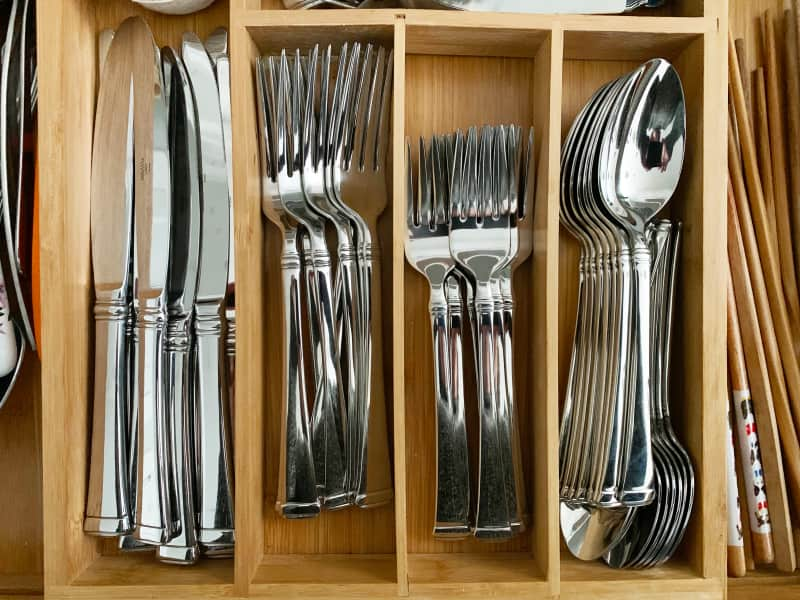
The definition of a standard place setting has changed over the years, but today it consists of five utensils: a salad fork, a dinner fork, a knife, a dinner spoon, and a teaspoon. Some utensils can be purchased à la carte (also called “open stock”). Others are sold in sets that include four to 12 place settings and often several matching serving utensils. Typically, the included serving utensils are a serving spoon and slotted spoon, a serving fork, a butter knife, and a sugar spoon.
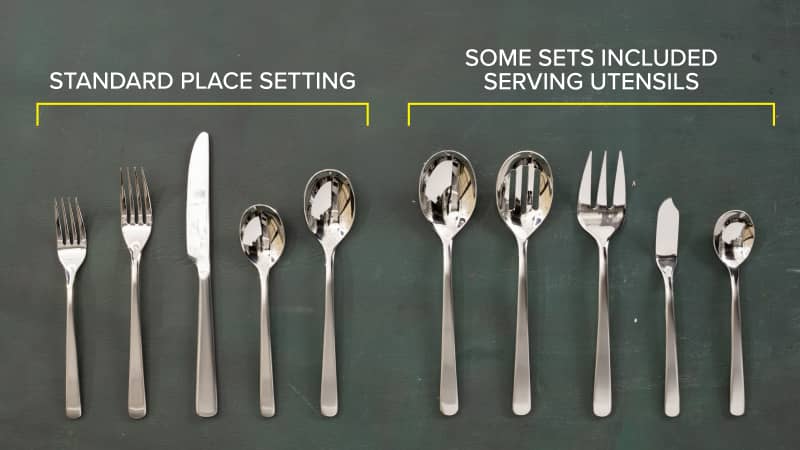
What to Look For
- Moderately Heavy, Well-Balanced Utensils: The best, most comfortable flatware was heavy enough to feel sturdy and substantial in our hands and—most important—was balanced from tip to handle. That combination of weightiness and balance made the utensils feel like natural extensions of our hands. We could simply pick up the flatware and enjoy our meals without thinking too hard about how to maneuver the forks, spoons, or knives we were using.
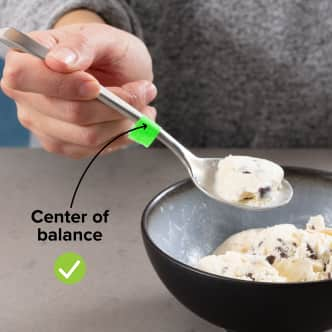

Some utensils—especially the spoons—tipped forward in our hand. This was because their center of balance was too close to the head of the utensil (right) instead of closer to the midpoint of the handle (left).
- Knives with Serrations: If you regularly eat meat, we recommend investing in a set of steak knives. We still think a regular dinner knife should be able to cut and slice through most foods, including the occasional piece of red meat. The best knives had tiny serrations along the front half of the blade that were sharp enough to neatly, easily slice steak and asparagus.
- Curved, Teardrop-Shaped Handles: The best utensils had handles that curved gently and ended in a teardrop shape. Those curves guided our hands into a comfortable position and helped us keep a secure grip.
- Handles with Rounded Edges: The most comfortable flatware had smooth edges that were comfortable to pick up, grip, and press against when we needed to slice or scoop.


Testers were unanimous: Handles that curved gently and widened at the end were easier to grip and more comfortable to hold than handles that were skinny and straight.
- Durable, Dishwasher-Safe Stainless Steel: Flatware that must be washed by hand is a nonstarter for us. Every set we tested is made from stainless steel and is dishwasher-safe, and none showed signs of wear and tear after repeated washing.
What to Avoid
- Imbalanced Utensils: When utensils weren’t weighted evenly, they tipped forward or backward in our hands and forced us to pay extra attention so that we wouldn’t spill or drop our food. It was very noticeable when we compared the spoons. The center of balance for some was located right by the bowl rather than along the handle, where people grip a utensil, which made them feel bowl heavy.

- Narrow, Straight Handles: Handles that were too skinny and straight were more likely to slip or slide slightly in our hands. Additionally, utensils with thin handles felt dinky to testers with large hands.
- Handles with Sharp Edges: The handles of one flatware set were slightly squared instead of rounded. They weren’t exactly sharp, but they pressed into our fingers uncomfortably.
Other Considerations
- Light Weight Doesn’t Mean Low Quality: One setting was considerably lighter than the rest. Its five pieces weighed 7¾ ounces combined, while the weights of the other place settings ranged from 9⅓ to 13¼ ounces. Because those lightweight utensils were balanced, they were effective. They had some subtle but artful decoration, so they didn’t feel cheap.
- Have nine testers (including a lefty) use the sets in a variety of real-life applications in their home kitchens
- Use the spoons to eat soup and ice cream
- Use the forks and knives to eat an assortment of foods with a variety of shapes and textures: tough, leafy green salad; Israeli couscous salad; bone-in chicken thighs and couscous; grilled steak; and broiled asparagus
- Place the flatware in a utensil holder inside a kitchen drawer, open the drawer and slam it shut three times, and then check for signs of damage
- Jam the flatware into a dishwasher caddy with the fork tines, knife blades, and spoon bowls facing down five times, and then check for signs of damage
- Wash the flatware by hand once
- Wash the flatware in the dishwasher following the tests and leave inside the closed dishwasher for two days
